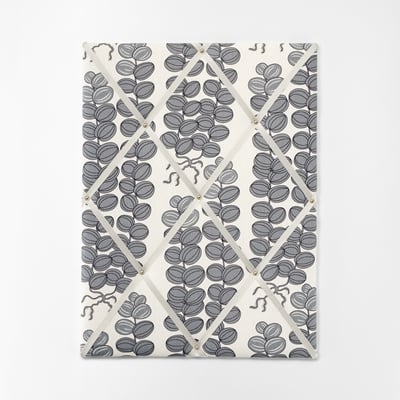Decorate the workplace with Svenskt Tenn’s noticeboard, upholstered with Estrid Ericson or Josef Frank textile. The noticeboard is decorated with webbing and rivets. The back has a suspension device in the fabrics direction.
The Celotocaulis print was originally designed by Josef Frank in 1930. Celoto comes from an Asian flower species characterised by a plume-like flower decoration and Caulis is the Latin word for flower stalk.
Designer
Josef Frank/Svenskt Tenn


Svenskt Tenn developed this design using Josef Frank's print.
Josef Frank grew up in Vienna and studied architecture at Technische Hochschule (the Vienna University of Technology) in 1903 – 1908. In the 1920s he designed housing estates and large residential blocks built around common courtyards in a Vienna with severe housing shortages. In 1925, he founded the Haus & Garten interior firm together with architect colleague Oskar Wlach. Svenskt Tenn hired Josef Frank in 1934 and just a few years later he and Estrid Ericson made their international breakthrough. Although he was already 50 when he left the burgeoning Nazism in Vienna for Sweden, Frank is considered one of Sweden’s most important designers. Read More










































































